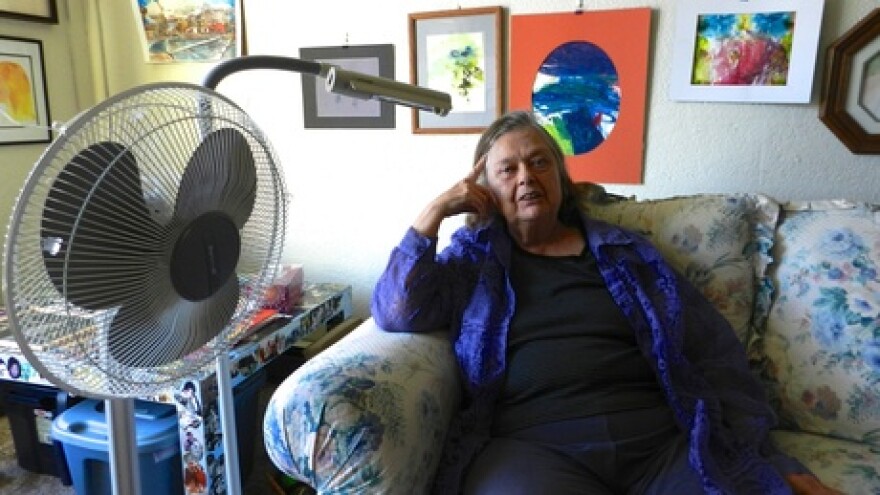PORTLAND – On hot summer days, 74-year-old HelenRuth Stephens doesn't dare leave her apartment. Not to get the mail or take out the trash.
“You don’t do it because you’ll be breathless by the time you get back,” she says.
She suffers from asthma and chronic obstructive pulmonary disease. Both affect her lungs. Hot weather drains her energy, she says, and makes it hard for her to breathe.
Stephens is the type of person public health officials worry about as they’re preparing for climate change.
That’s in part because of her existing health problems, but also because she lives in what scientists call an urban heat island. It’s a part of the city that soaks up more of the sun’s heat because it has a lot of buildings, pavement and vehicle traffic.
Stephens’ building is surrounded by a black asphalt parking lot, a dense network of city streets lined with more apartments and the whirring of traffic on Interstate 405. That means when it gets hot outside, it’s even hotter in her neighborhood.
More than half of the average city landscape is covered in dark, sun-absorbing surfaces such as asphalt or dark roofing, according to Ben Mandel with the Heat Island Group at Lawrence Berkley Labs. Those surfaces can get 60 to 70 degrees hotter than more reflective surfaces or greenery and actually radiate heat into the surrounding air both day and night.
“On a 90-degree day, if a roof has been in the sun all day, it’s not going to be 90 degrees. It’s going to be maybe 150 degrees as a result of all the heat it’s accumulated,” says Mandel.
During a heat wave, hot surfaces in the city drive air temperatures in the city even higher.
“The longer the heat wave persists, the hotter the city keeps getting because it keeps absorbing the heat with nowhere to dissipate it,” says Mandel. “That’s actually the most deadly impact of the heat island effect.”
The prospect of hotter summers has health officials taking a close look at urban heat islands. Climate models predict hotter summers and a higher likelihood of extreme heat events in the coming decades, and experts say that poses health risks – even in the milder climates of Oregon and Washington.

